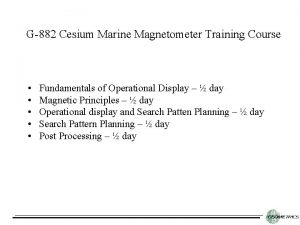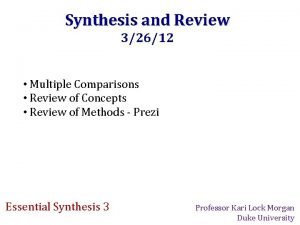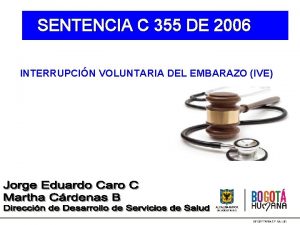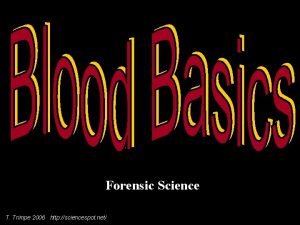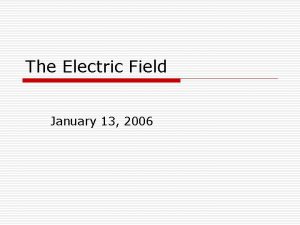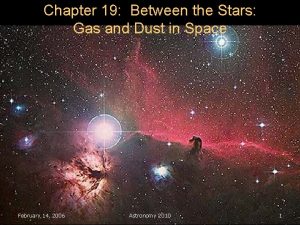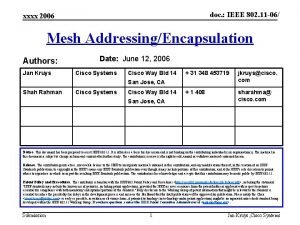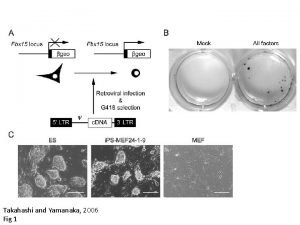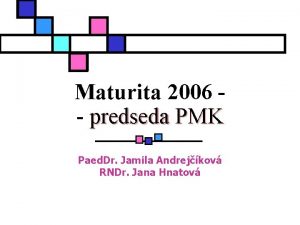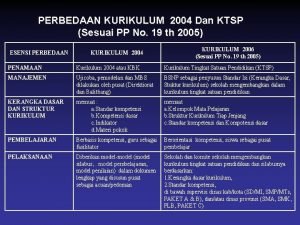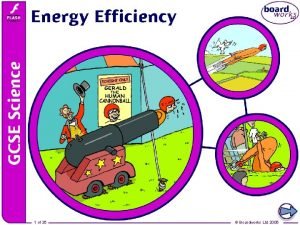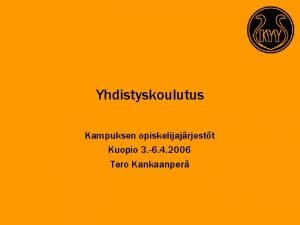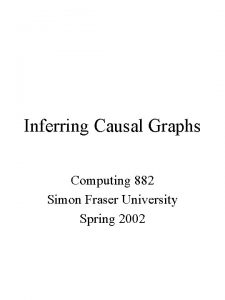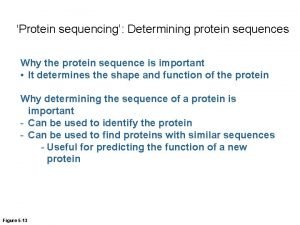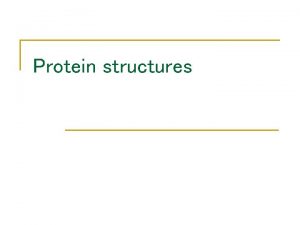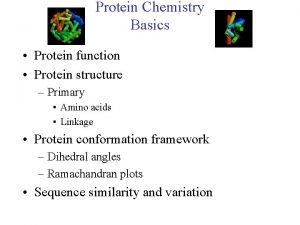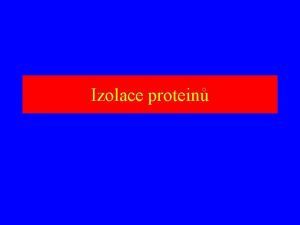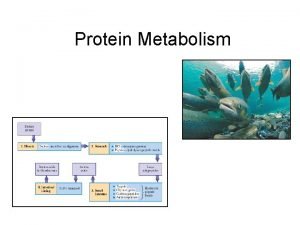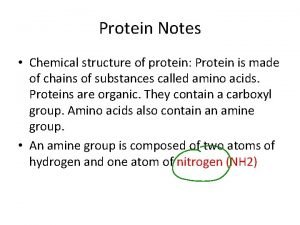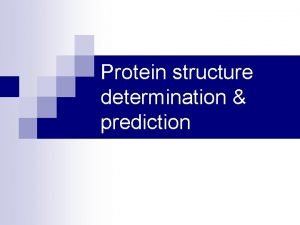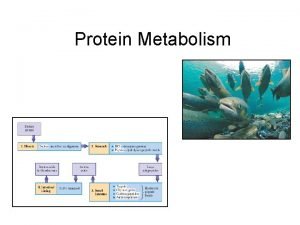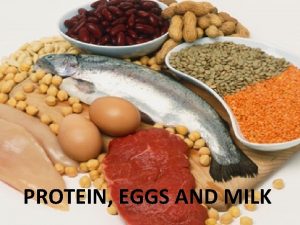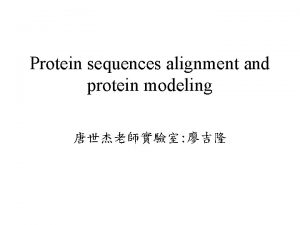CS 882 Fall 2006 Lecture 7 Computing Protein









































- Slides: 41

CS 882, Fall 2006 Lecture 7. Computing Protein Structures • Current attempts: • Threading: RAPTOR • Consensus: ACE • Fragment assembly Can we compute the protein structures eventually? Your projects.

Homologous proteins have similar structure and functions n Being homologous means that they have evolved from a common ancestral gene. Hence at least in the past they had the same structure and function. n Caution: old genes can be recruited for new functions. Example: a structural protein in eye lens is homologous to an ancient glycolytic enzyme. n Homology search is done by BLAST, or Pattern. Hunter for more sensitivity. BLAST will work with over 30% sequence identity.

Conserving core regions n Homologous proteins usually have conserved core regions. n When we model one protein after a similar protein with known structure, the main problem becomes modeling loop regions. n Modeling loops can also depend on database to some degree. n Side chains: on a few side-chain conformations frequently occur – they are called rotamers, there is a such a database.

Primary, secondary, and tertiary n There are many secondary structure prediction programs. However, without considering tertiary structure, we will never be correct solely predicting secondary structures. n Most tertiary structure prediction programs today depend on good secondary predictions. This is also not good: you cannot get right tertiary structure with wrong starting information. n They must be done together.

There are not too many candidates! n There are only about 1000 topologically different n n n domain structures. There is no reason whatsoever that we cannot compute their structures accurately. Ab initio method – we have heard about it. Another promising method is threading (separate lecture). After threading, an important step is “refinement”, perhaps by fragment assembly. This will be a separate topic (Xin Gao). Folding membrane proteins is a quite different topic (Richard Jang). Now we go to threading.

Protein Threading n Make a structure prediction through finding an optimal placement (threading) of a protein sequence onto each known structure (structural template) n “placement” quality is measured by some statistics-based energy function n best overall “placement” among all templates may give a structure prediction target sequence MTYKLILNGKTKGETTTEAVDAATAEKVFQYANDNGVDGEWTYTE template library

Threading Example

Introduction to Linear Program n n n Optimize (Maximize or Minimize) a linear objective function n e. g. 2 x+3 y+4 z The variables satisfy some linear constraints. e. g. 1. x+y-z >=1 2. 2 x+y+3 z=3 integer program (IP) =linear program (LP) + integral variables LP can be solved within polynomial time --- Interior point method. Simplex method also runs fast. We used IBM package. Polynomial time for IP not likely, NP-hard n IP can be relaxed to LP, solve the non-integral version n Branch-and-bound or branch-and-cut (may cost exponential time)

Why Integer Programming? n Treat pairwise potentials rigorously n critical for fold-level targets n Existing Exact algorithms for pairwise potentials High memory requirement, or n Expensive computational time n n Exploit correlations between various kinds of item scores in the energy function n 99% real data generate integral solutions directly, no branch-and-bound needed.

Different approaches n Approximation Algorithm n Interaction-Frozen Algorithm (A. Godzik et al. ) n Monte Carlo Sampling (T. Madej et al. ) n Double dynamic programming (D. Jones et al. ) n Recursive dynamic programming (R. Thiele et al. ) n Exact Algorithm n Branch-and-bound (R. H. Lathrop et al. ) n n Exploit the relationship among various scoring parameters, fast self-threading Divide-and-conquer (Y. Xu et al. ) n Exploit the topological structure of template contact graphs

Formulating Protein Threading by LP • Protein Threading Needs: 1. 2. 3. 4. Construction of Template Library Design of Energy Function Sequence-Structure Alignment Template Selection and Model Construction

Threading Energy Function how preferable to put two particular residues nearby: Ep how well a residue fits a structural environment: Es (Pairwise potential) (Fitness score) sequence similarity between query and template proteins: Em alignment gap penalty: Eg (gap score) (Mutation score) Consistency with the secondary structures: Ess E= Ep + Es + Em + Eg + Ess Minimize E to find a sequence-structure alignment

Contact Graph template 1. 2. 3. Each residue as a vertex One edge between two residues if their spatial distance is within a given cutoff. Cores are the most conserved segments in the template: alpha-helix, betasheet

Simplified Contact Graph

Contact Graph and Alignment Diagram

Contact Graph and Alignment Diagram

Variables n x(i, l) denotes core i is aligned to sequence position l n y(i, l, j, k) denotes that core i is aligned to position l and core j is aligned to position k at the same time.

Formulation 1 Eg , Ep Es , Ess , Em Encodes scoring system Encodes interaction structures: the first makes sure no crosses; the second is quadratic, but can be converted to linear: a=bc is eqivalent to: a≤b, a≤c, a≥b+c-1

Formulation used in RAPTOR Eg , Ep Es, Ess, En Encodes scoring system Encodes interaction structures

Solving the Problem Practically 1. More than 99% threading instances can be solved directly by linear programming, the rest can be solved by branch-and-bound with only several branch nodes 2. Less memory consumption 3. Less computational time 4. Easy to extend to incorporate other constraints

CPU Time for CAFASP 3 targets

Fold Recognition n Support Vector Machines (SVM) Approach n Features are extracted from the alignments n A threading pair is treated as a positive pattern only if they are in at least fold-level similarity n 60, 000 threading pairs are employed to train SVM model. n 5% more targets are recognized by SVM approach than the traditional z-Score

Part II. Experiments Test Lindhal et al. benchmark Evaluator us Data Set large Blindness no public no Live. Bench third-party small no yes CASP/CAFA SP third-party small yes

Target Category CASP 5 CM CM/FR FR(H) FR(A) CAFASP 3 HM easy (family level) HM hard (superfamily level) FR (fold level) # targets 20 12 30 NF/FR Hard Easy Prediction Difficulty CM: Comparative Modelling, HM: Homology Modelling FR: Fold Recogniton, NF: New Fold NF

Lindahl Benchmark Test 976*975 threading pairs are tested, the results of other servers are taken from Shi et al. ’s paper.

Live. Bench Test Live. Bench 6 Live. Bench 7 Month Rank Feb 10 March 1 April 3 May 2 June 6 6 Total 4 Easy 6 Easy 7 Hard 5 Hard 3 Month Rank August 3 September 4 October 7 November 14 December 9 Total (http: //bioinfo. pl/Live. Bench)

CASP 5/CAFASP 3 n 62 targets n Time allowed for each target: n Individual Servers: 48 hours n Meta Servers: 48 hours n Predictors: computer program, no manual intervention (CAFASP 3) n Evaluated by computer program n RAPTOR was voted by CASP 5 attendees as the most novel approach, at http: //forcasp. org CAFASP 3: The Third Critical Assessment of Fully Automated Structure Prediction

CAFASP 3 Evaluation Criteria n Model n n Only the first submission considered for each target, each server can submit 10 models for each target, n Max. Sub (evaluation program) n n n Superimpose the predicted structure with the experimental structure Calculate the length of maximum superimposable subsegment within 5Å RMSD one prediction is regarded as correct only if the length is above a given value.

CAFASP 3 Evaluation Criteria n Sensitivity (N-1 Rule) n One miss allowed for each server, i. e. , the first models of N-1 out of N targets ranked n Specificity n Rank the first models of all targets according to their z. Scores n S(M): # Correct before the first M false positives n Average of S(1), S(2), …, S(5)

Specificity Example Predicted Model z. Score Correct ? (by Max. Sub) T 1 9. 1 Yes T 2 8. 4 Yes T 3 7. 8 No T 4 7. 6 Yes T 5 7. 5 No T 6 7. 4 Yes … … … T 30 … … S(1)=2 S(2)=3 First false positive Second false positive

Sensitivity on FR targets (1) 30 FR targets 54 servers Sum Max. Sub Score # correct 3 ds 5 robetta 5. 17 -5. 25 15 -17 pmod 3 ds 3 pmode 3 4. 21 -4. 36 13 -14 RAPTOR 3. 98 13 shgu 3. 93 13 3 dsn orfeus 3. 64 -3. 90 12 -13 pcons 3 3. 75 12 fugu 3 orf_c 3. 38 -3. 67 11 -12 … … … pdbblast 0. 00 0 … … … blast 0. 00 0 (http: //ww. cs. bgu. ac. il/~dfischer/CAFASP 3, released on Dec. , 2002. )

Sensitivity on FR targets (2) CM/FR FR(H) FR(A) NF/FR NF # Correct 6 4 2 1 0 # Targets 7 7 6 5 5 1. RAPTOR is weak at recognizing FR(A) targets (need improvement ) 2. RAPTOR cannot deal with NF targets at all (normal)

Sensitivity on Hard HM targets Ran k Servers Score # Correct 1 3 ds 5 5. 13 12 2 3 ds 3 shgu 4. 93 -5. 02 12 4 pmod 3 4. 60 -4. 68 12 6 orfeus orfb 3 dpsm raptor fugu 3 pco 3 robetta 4. 33 -4. 43 12 8 samt 02 4. 18 12 … … 11 pdbblast 4. 28 12 … … blast 0. 32 2

Specificity of Servers Rank Servers Specificity 1 3 ds 5 24. 8 2 pmodel 3 dsn 3 ds 3 pmodel 3 22. 0 -22. 6 6 pcons 3 shgu 21. 4 -21. 6 8 inbgu fugu 3 19. 0 -19. 8 10 ffas 03 orfeus fugsa 18. 2 -18. 4 13 raptor 3 dpsm orf_c 17. 4 -17. 8 … … … pdbblast 13. 0 blast 4. 0 Out of 33 Targets

CAFASP 3 Example n Target ID: T 0136_1 n Target Size: 144 n Superimposable size within 5Å: 118 n RMSD: 1. 9Å Red: Experimental Structure Blue/green: RAPTOR model

CASP 6, T 0199 -2, ACE buffalo rank: 9 th From RAPTOR rank 1 model. TM=0. 4183 Max. Sub=0. 2857. Good parts: 116 -134, 286 -332 Left: predicted structure. Right: experimental structure

CASP 6, T 0203 ACE buffalo rank: 1 st From RAPTOR 2 nd model. TM=0. 6041, Max. Sub=0. 3485. Good parts: 19 -57, 89 -94, 139 -178, 224 -239, 312 -372 RAPTOR first Model ranks 5 th Predicted Experimental

CASP 6, T 0262 -2, ACE buffalo rank: 4 th From Fugue 3 6 th model. TM=0. 4306, Max. Sub=0. 3459. Good parts: 162 -203 Fugue’s top model ranks low Predicted Experimental

CASP 6, T 0242, NF, ACE buffalo rank: 1 From RAPTOR rank 5 model. TM score=0. 2784, Max. Sub score=0. 1645 However, RAPTOR top model ranks 44 th ! Trivial error? Predicted Experimental

CASP 6, T 0238, NF ACE buffalo rank 1 st From RAPTOR 8 th model TM=0. 2748, Max. Sub=0. 1633 Good part: 188 -237. High TM score, low Max. Sub Raptor top model ranks 4 th Predicted Experimental

About RAPTOR n Jinbo Xu’s Ph. D. thesis work. n The RAPTOR system has benefited significantly from PROSPECT (Ying Xu, Dong Xu, et al). n Currently distributed by BSI. n References: J. Xu, M. Li, D. Kim, Y. Xu, Journal of Bioinformatics and Computational Biology, 1: 1(2003), 95 -118. J. Xu, M. Li, PROTEINS: Structure, Function, and Genetics, CASP 5 special issue.
 Geometrics g 882 marine magnetometer
Geometrics g 882 marine magnetometer Cea mai longeviva pasare
Cea mai longeviva pasare Mil-std-882
Mil-std-882 Xkcd multiple comparisons
Xkcd multiple comparisons Cupe 882
Cupe 882 Nixon carter gay
Nixon carter gay Protein pump vs protein channel
Protein pump vs protein channel Protein-protein docking
Protein-protein docking 01:640:244 lecture notes - lecture 15: plat, idah, farad
01:640:244 lecture notes - lecture 15: plat, idah, farad Parallel and distributed computing lecture notes
Parallel and distributed computing lecture notes Cmu cloud computing
Cmu cloud computing Conventional computing and intelligent computing
Conventional computing and intelligent computing C- 355 de 2006
C- 355 de 2006 Misi nasional
Misi nasional What is unfair competition
What is unfair competition T. trimpe 2006 http //sciencespot.net/
T. trimpe 2006 http //sciencespot.net/ Giddens 2006
Giddens 2006 January 13 2006 calendar
January 13 2006 calendar T trimpe
T trimpe 2006 ipod
2006 ipod 2006 el paso flood
2006 el paso flood Gina 2006
Gina 2006 Rabt 2006
Rabt 2006 Scott ransom 2006
Scott ransom 2006 Picture nasa took on feb 14 2006
Picture nasa took on feb 14 2006 2006
2006 Xxxx 2006
Xxxx 2006 Ss-en 12097:2006
Ss-en 12097:2006 Takahashi
Takahashi Juvenile justice and welfare act of 2006
Juvenile justice and welfare act of 2006 Nice 2006
Nice 2006 T. trimpe 2006 http://sciencespot.net/
T. trimpe 2006 http://sciencespot.net/ Maturita 2006
Maturita 2006 Adler and rodman 2006
Adler and rodman 2006 Http sciencespot.net
Http sciencespot.net 11072006
11072006 Substansi struktur kurikulum dalam kurikulum tahun 2004
Substansi struktur kurikulum dalam kurikulum tahun 2004 2006
2006 Boardworks ltd 2006
Boardworks ltd 2006 6/4/2006
6/4/2006 Syawal 2006
Syawal 2006 T.trimpe 2006 http sciencespot.net
T.trimpe 2006 http sciencespot.net
